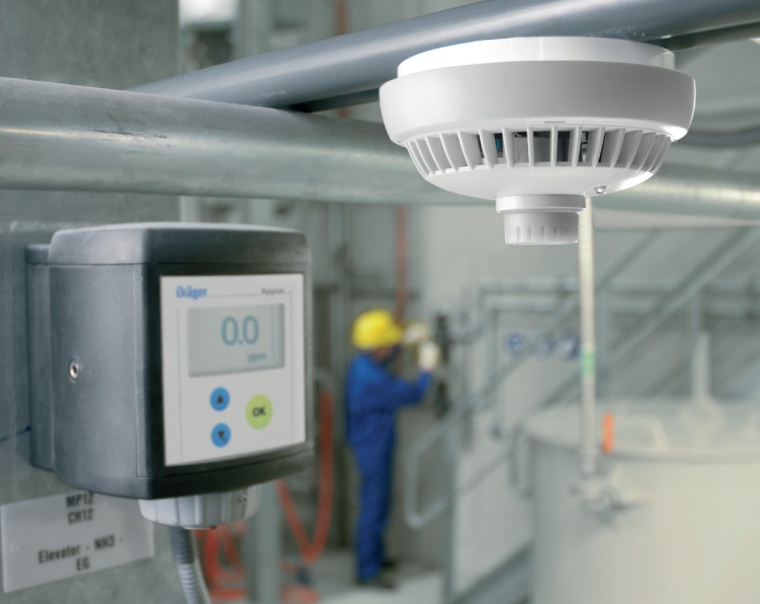Dräger: efficient approaches to fire prevention
Dräger: efficient approaches to fire prevention. Fire means danger – for people as well as buildings and facilities. Fires can also bring disastrous consequences to companies, resu...

Dräger: efficient approaches to fire prevention. Fire means danger – for people as well as buildings and facilities. Fires can also bring disastrous consequences to companies, resulting in financial ruin after the flames have been extinguished. In particular, small and medium-sized companies cannot usually absorb the long periods of shutdown that follow a serious fire. The best protection, in order to minimize damage and avoid the worst outcome, is prevention. Prevention calls for two approaches. An appropriate plant-specific fire protection plan should be established which suits the plant/building layout and ensures the most suitable choice of fire alarm systems. Internal emergency plans should also be put in place to regulate the conduct of personnel in the event of a fire, and to make sure that any damage is kept to a minimum.
Planning Fire Protection from the Start
Comprehensive fire protection starts during the construction phase. For this reason companies involved in the construction process should coordinate their activities and plan the installation of fire detection technology early. Locking devices on fire or smoke protection doors, for instance, should be included in the construction plan right from the start.
Insurers will expect numerous regulations on the installation and operational efficiency of fire detection technology to be met and this will, in the main, dictate the framework for the fire protection concept. For planning and installation, companies and public institutions can employ the services of safety technology providers.
No Smoke without Fire: Fire Detection Technology
A fire can be noticed in different ways. The identifying characteristics of a fire include flames or sparks, smoke, increased levels of carbon monoxide or heat. Depending on the site and application, the type of scenario that might lead to the outbreak of a fire in a plant or public institution will dictate the choice of fire technology. An unattended candle in an office, for example, requires a different form of monitoring than gas that could escape from propane gas bottles in a warehouse, or the creation of gas in a silo.
A number of different fire detection and gas measuring systems are available to identify these different types of hazard. These include punctiform fire detectors, gas sensors, gas sensing heads and video flame detectors.
Classic punctiform fire detectors identify imminent danger through the detection of smoke. They are used in offices and in industry. However, these alarm generators do not necessarily suit every condition. In environments where fog appears regularly, for instance, fires will need to be identified by another method rather than smoke detection.
CCTV flame detectors operate on the principle that they detect the movement and outline of a fire. They are also able to detect fires at greater distances. The Dräger Flame 5000, for example, provides real-time information on potentially hazardous areas and, should a flame be detected, will immediately issue an alarm. Featuring enhanced video technology, it also records each event.
Unlike infrared or ultraviolet detectors, video flame detectors of this kind use the camera to detect the flame and, as a result, can virtually eliminate the false alarms that can be caused by weather or heat radiation. Gas measuring technology is recommended in areas where fires could be the result of gas generation or a gas escape. Sources of danger can also be identified in explosive areas and displayed before the first flame appears.
To establish comprehensive safety management in areas where toxic and explosive gases are handled, it is recommended that fire detectors and gas measuring technology are integrated into a network. By linking the information and ensuring uniform visualization, the use of both systems will provide an overview of fire development as well as the gas concentration.
As a VDS-certified installer of fire alarm systems, Dräger provides information on relevant regulations and on choosing the appropriate fire detection technology, and also carries out installation and maintenance work.
Risk Management for the Worst Case Scenario
Once a fire has broken out and has been identified, the initial steps following detection can have a major effect on the ultimate extent of the disaster. In the time between damage occurring and the police, fire department or rescue services arriving, there is always a “reaction gap”. Events can escalate during this period unless protective measures are taken immediately.
Even small fires can easily become out of control and turn into a blaze. Dräger offers extensive training on correct conduct in dangerous situations. Practice-orientated training courses are designed to instruct users on the safe handling of fire extinguishers, or how to evacuate buildings in an emergency.
To ensure that they take suitable emergency measures, course participants are taught how to identify critical situations and how to assess possible developments. In seminars on crisis management and communication, they deal with actual incidents. They are shown how to work out emergency plans and how to create sound concepts for handling risk situations. These training sessions prepare the participants, in realistic conditions, so that they are able to take the right measures, even when under extreme mental strain. Managers are trained to keep the effects of an incident to a minimum, helping to accelerate the return of normal operations.
Complete Protection Requires Both Man and Technology
Internal fire protection calls for the comprehensive protection of personnel as well as the installation – against fire, its cause and its consequences. To reduce the risk, buildings should be equipped with appropriate measuring and alarm technology.
It is also recommended that personnel are prepared, ready to deal with worst case scenarios. This will ensure that the right measures are taken as soon as an incident has been detected and that any damages are kept to an absolute minimum.
Contact:
Drägerwerk AG & Co. KGaA, Lübeck, Germany
Tel.: +49 451 882 1547
Fax: +49 451 882 3197
christine.reimann@draeger.com
www.draeger.com













